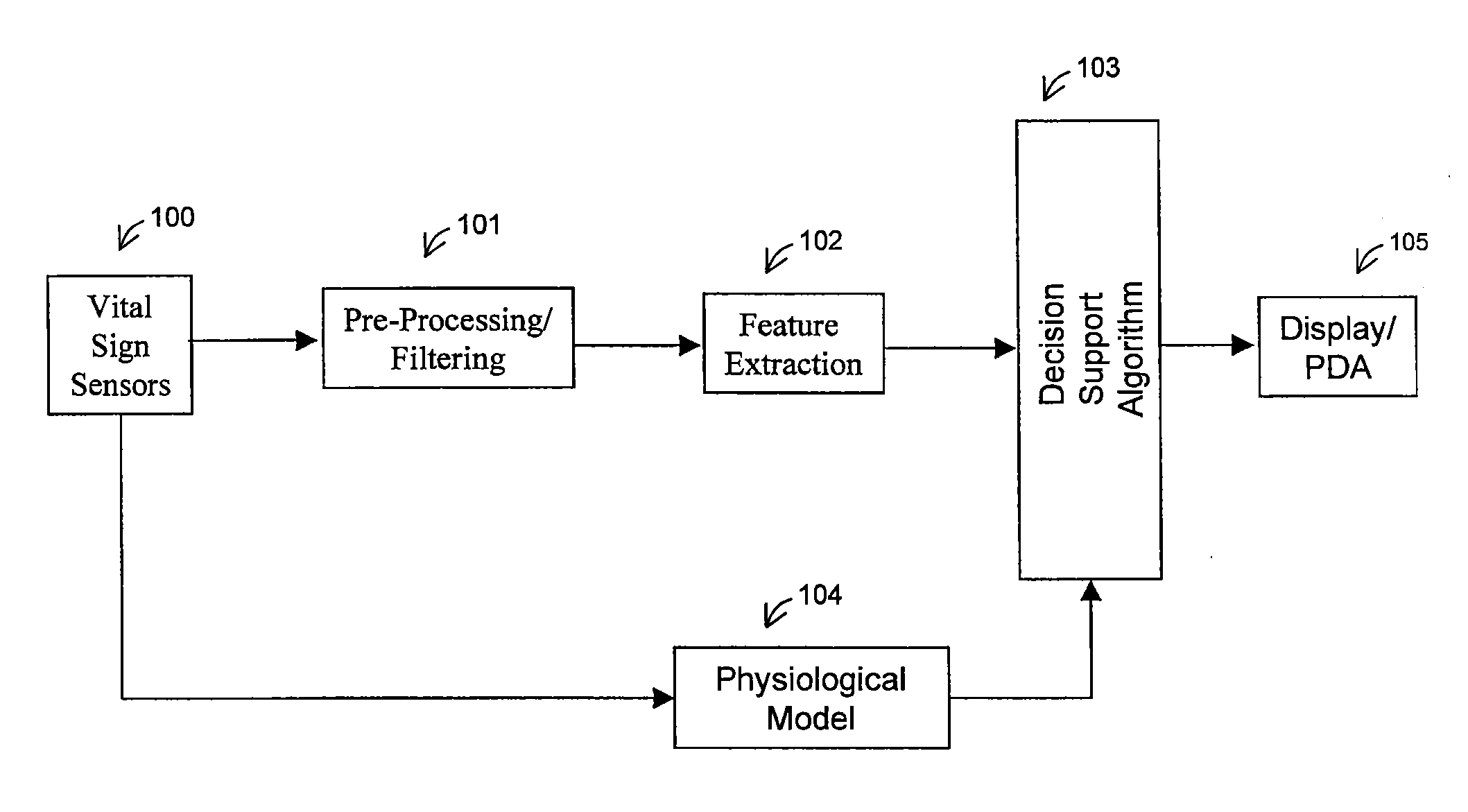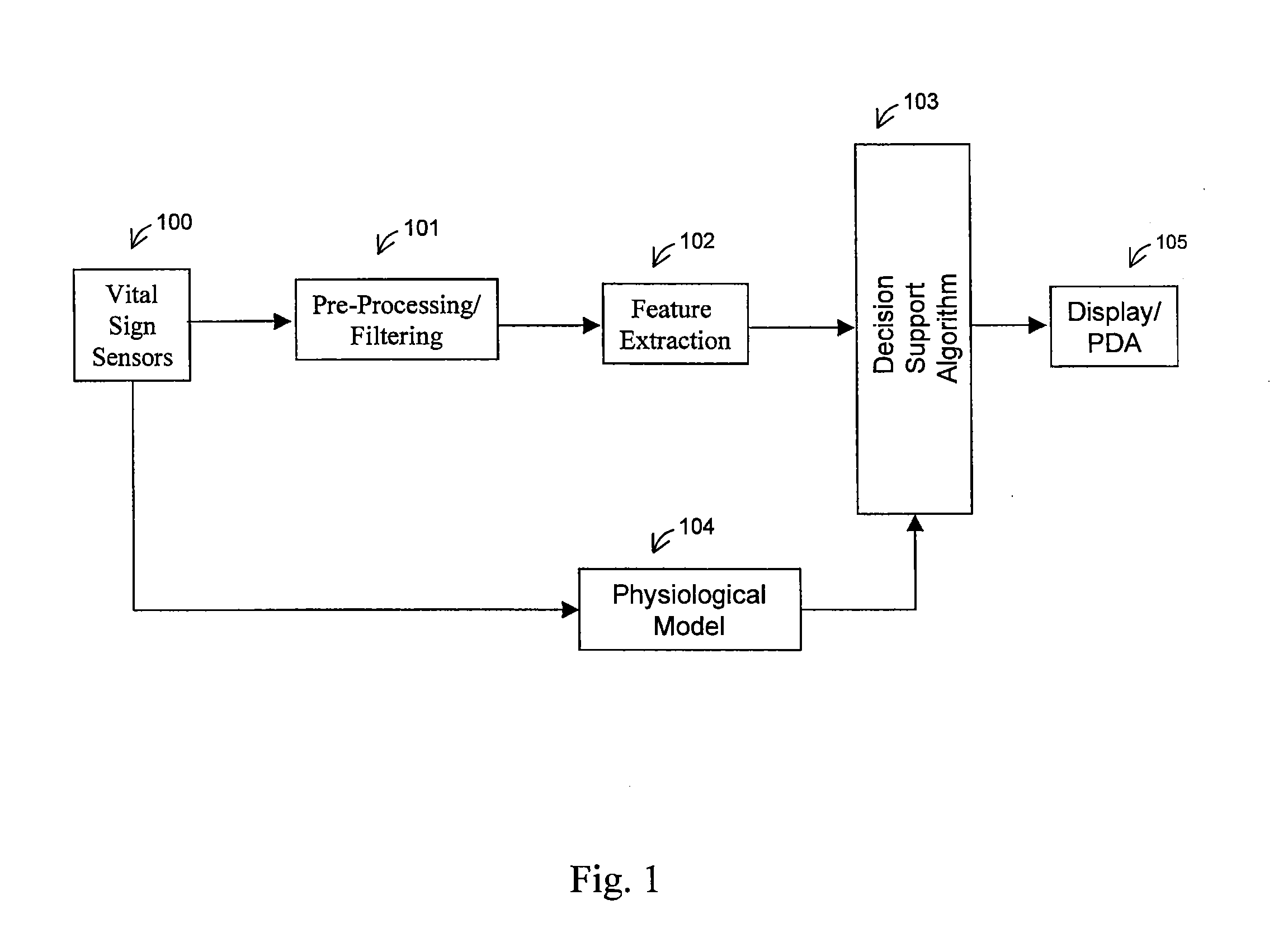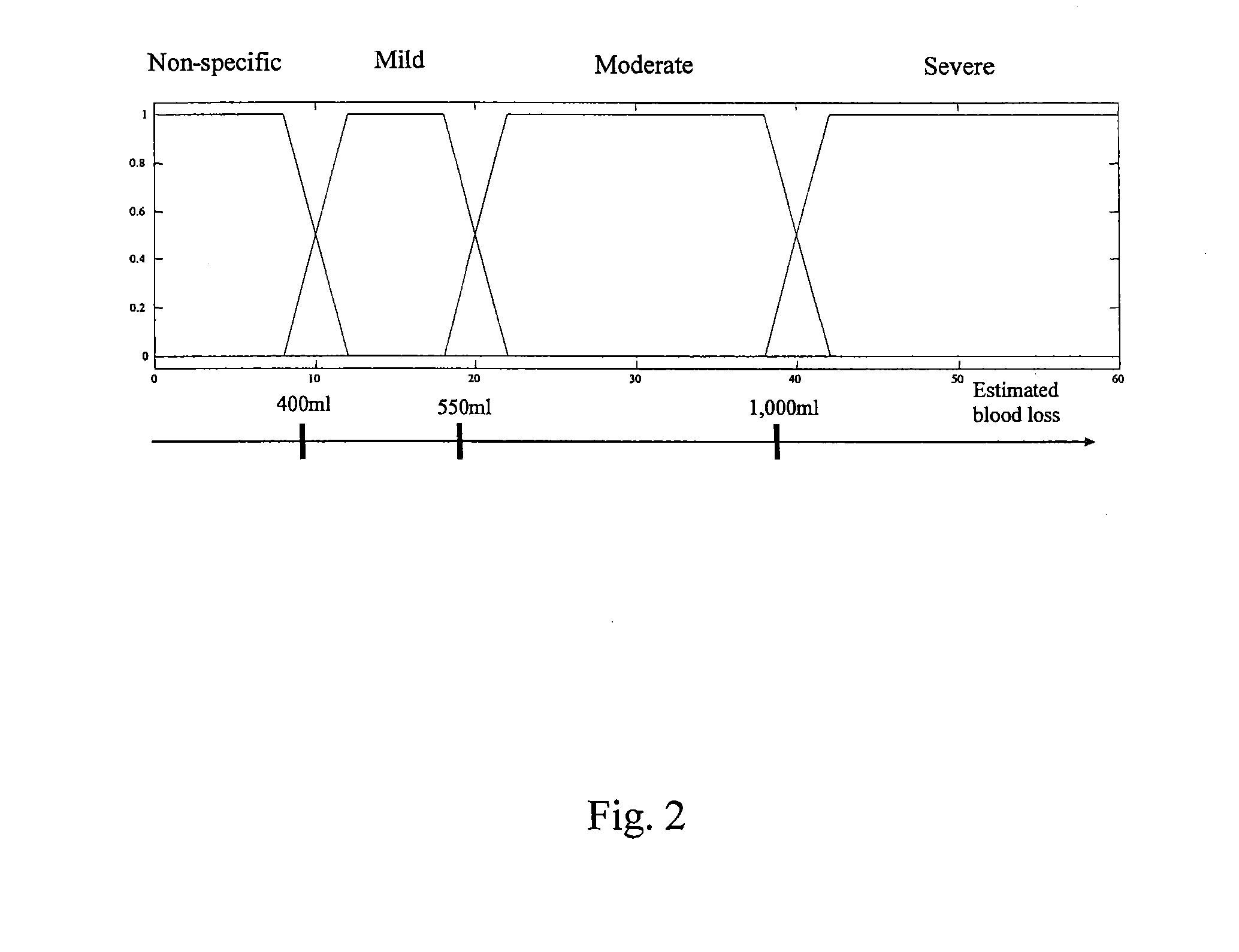Methods and systems for non-invasive, internal hemorrhage detection
a non-invasive, internal hemorrhage technology, applied in the field of systems and methods for detecting internal hemorrhaging, can solve the problems of severe burns, high output fistulas, and extensive bleeding
- Summary
- Abstract
- Description
- Claims
- Application Information
AI Technical Summary
Benefits of technology
Problems solved by technology
Method used
Image
Examples
first embodiment
[0120]a physiological model node 135 (also element 104 of FIG. 1) is shown in FIG. 23. The physiological model receives information directly from the vital signs sensors 100 of FIG. 1. It is based on a trivariate model, and will calculate the estimated heart rate 162, blood pressure 163, and respiration 164. The trivariate model is described in a paper entitled “Heart Rate Control and Mechanical Cardiopulmonary Coupling to Assess Central Volume: a Systems Analysis” and published in the American Journal of Physiology—Regulatory Integrative and Comparative Physiology, on Nov. 1, 2002; 283(5):R1210-1220, by R. Barvieri, J. K. Triedman, and J. P. Saul, which is hereby incorporated by reference. The estimates generated by the trivariate model will be compared with the actual measurements, producing an error signal.
second embodiment
[0121]In a physiological model node 135, the physiological parameters may be computed based on a cardiovascular short-term regulation model. This is a multivariate autoregressive technique which models the beat-to-beat interactions between respiration, RR interval, central venous pressure (CPV), and arterial blood pressure (APB). Relationships between biological signals can be attributed to specific physiological mechanisms, and this multivariate technique may be used to quantify the relations between the respiratory and the hemodynamic parameters, allowing for assessment of central volume changes. The most important changes include a near-linear response of magnitude of respiratory sinus arrhythmia (RSA) and baroreflex sympathetic gain. The model output is compared with the actual measurements to output the error signal.
[0122]An embodiment of the spectral feature extraction node 136 is shown in FIG. 24. This node processes spectral calculations for each of the vital sign measuremen...
PUM
 Login to View More
Login to View More Abstract
Description
Claims
Application Information
 Login to View More
Login to View More - R&D
- Intellectual Property
- Life Sciences
- Materials
- Tech Scout
- Unparalleled Data Quality
- Higher Quality Content
- 60% Fewer Hallucinations
Browse by: Latest US Patents, China's latest patents, Technical Efficacy Thesaurus, Application Domain, Technology Topic, Popular Technical Reports.
© 2025 PatSnap. All rights reserved.Legal|Privacy policy|Modern Slavery Act Transparency Statement|Sitemap|About US| Contact US: help@patsnap.com



